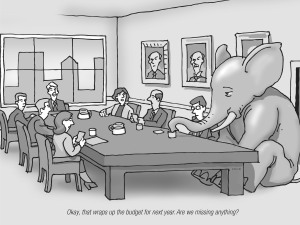I had a brief in recently that made me look again at quizzes. Not the intellectual type – but those little addictive Buzzfeed or Facebook feed quizzes that invite you to find out where you should live, your ultimate pet or your inner Mean Girl.
The sheer volume available online could keep you busy for years, whilst the content itself continues to offer irreverent viewpoints on your personality (today’s top trending are around you inner celeb , Puppies and the aptly titled “you can only call yourself a cake lover if you’ve eaten at least 22 of these cakes“)
Traditionally associated with the 15 year old girl filling in Angst ridden magazine quizzes to find out if her crush is really into her, the personality quizzes of today, (and these are the ones making up 77% of all personality quiz types (Source: PlayBuzz.com)) are attempting to appeal to one of three key needs for the user:
- Personality Type: Borrowed from the premise behind Myers Briggs your answers effectively reveal dominant personality characteristics and thus give you a type. Admittedly on Buzz feed it’s more warrior princess but the need remains the same. People want to know what their personalities reveal about them.
- Projected Type: The quizzes that give you a whiff of the future. The potential of who you could be when you grow up. More often than not founded on little else than a great copywriter the ones that work are the ones that offer the user a future self that is either a #fail (comedy value) or dramatic improvement (Ego lift) on their reality. People want to know what their potential could be.
- Discovery Type: These are the ones that are voyages of self-discovery. Uncovering if you should listen to new artists, visit new holiday destinations or move into a canal boat the questions allow you to discover something about yourself that is inherently fresh and challenges your preconceptions.
For the end user the scientific, or psychological basis of these tests is largely immaterial (discounting the actual real scientific tests that are based out there!) But, as discussed by Robert Simmermon, Ph.D., a psychologist in Atlanta Ga, when chatting with the Huffington Post “It reinforces a sense of ourself, whether it has any legitimacy or not,we know it’s not literal, but we hold out maybe a little secret part of ourselves that hopes it is true.”
So should quizzes play a part in a brands content strategy? Undoubtedly with the right personality, a fabulous copywriter and the right mindset tapped into it can help engage this audience with content in a way that very few other opportunities allow. So what are the principles of great quiz content.
- Know your purpose. Audience insight, brand engagement or product sales. Know what you’re after before the typologies even start to flow!
- Brand over Banter…. It’s easy to get caught up in the creative of the quiz but think about how the audience will feel about the brand after. Be consistent with how you should behave, but don’t necessarily behave how they would expect. (Great example from Lloyds here)
- Share versus Interactions. Some quizzes can be hugely successful by the volume of interactions and the 1:1 quiz / user relationship. Not every quiz needs to end with a shareable result to achieve it’s initial purpose.
- Seeding the content. Creating a quiz can be as easy as good copy, great stock imagery, but a quiz that is created without any thought to inviting respondents is a very lonely quiz! Consider mailing lists, social media, influencers, website UX and SEO – then consider if that’s enough to achieve your goal or a cash injection is needed to drive the right volume of visitors through to the quiz.
And with that this is a Pocahontas, Chocolate ice-cream flavored 37 year old signing off.
P.S. One of those results was spot on!
 considering that the
considering that the  all played snake, occasionally space impact and without a doubt never opened pairs. We had 4 games, the same features and a limitation to how long that screen could hold our attention. The only way to add our own personality to our phone was a clip on case, a £5 ringtone (delivered by SMS) and a pixelated screensaver. They were a social leveler but they were also customized, not personlised.
all played snake, occasionally space impact and without a doubt never opened pairs. We had 4 games, the same features and a limitation to how long that screen could hold our attention. The only way to add our own personality to our phone was a clip on case, a £5 ringtone (delivered by SMS) and a pixelated screensaver. They were a social leveler but they were also customized, not personlised.



